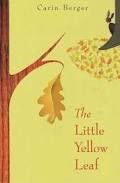CONNECTING TO READING
TIPS FOR READING SUCCESS - OCTOBER EDITION
MRS. BONNIE TRETTENERO
| BOOK PICKS FOR OCTOBER -THE LITTLE YELLOW LEAF BY CARIN BURGER PRE-K – GRADE 2 
- WE’RE GOING ON A LEAF HUNT BY STEVE METZGER PRE-K –GRADE 3
-LEAF MAN BY LOIS EHLERT PRE-K –GRADE 3
- LEAVES BY DAVID EZRA STEIN PRE-K – GRADE 1 --------------------------------- READING AT HOME CAN MAKE A HUGE DIFFERENCE! (even 10-15 minutes)
CHOOSE BOOKS THAT MATCH YOUR CHILD’S INTERESTS.
KEEP PLENTY OF READING MATERIALS IN YOUR HOME: BOOKS, MAGAZINES, NEWSPAPERS, AND COMIC BOOKS. CHILDREN ENJOY HAVING A VARIETY OF READING MATERIALS!
GO TO THE LIBRARY, THRIFT SHOPS YARD SALES, OR ASK FRIENDS FOR BOOKS.
BOOKS ARE FUN!
| In order for children to understand what they read, they must first be able to read words on the page. They must be aware of letters and the sounds they make and understand to stretch the sounds to make words. This is decoding.
TOOLS TO HELP DECODE TRICKY WORDS
1. LOOK AT THE PICTURE AND THINK 2. THINK ABOUT THE STORY 3. LOOK FOR PARTS OR CHUNKS IN THE WORD 4. S-T-R-E-T-C-H OUT THE SOUNDS SLOWLY 5. SKIP OVER THE WORD, FINISH THE SENTENCE, AND RE-READ 6. START TO SAY THE FIRST LETTER(S) OF THE WORD 7. TRY DIFFERENT SOUNDS THAT THE LETTER OR CHUNKS CAN MAKE. EXAMPLE-SHORT/LONG, HARD C OR SOFT C ETC. 8. LOOK LEFT TO RIGHT 9. IF NOT MAKING SENSE, GO BACK AND RE-READ
-------------------------------------------------------------- Some ABC’s for Raising a Reader by June E. Barnhart, Ph.D and Jerry L. Johns, Ph.D. A-active involvement during reading B-bedtime stories C-create a positive and fun atmosphere D- Don’t stop reading to them E-encourage risk-taking in first attempts F-find low shelves to keep books G-give books as gifts H-hold the books so your child can see I-include family members J-join the library K-know your child’s favorite books L-listening to stories expands vocabulary M-model reading for your child N-notice print as you run errands O- own a few books and add to it P-pattern books repeat the same phrase Q-have questions about the story R-read at least 15 minutes a day S-strive to make reading fun T-talk about what you read before , during, and after reading U-understand that your child may want to read favorite books again and again. V-Value your child’s writing W-writing opportunities for your child should be plentiful X-examine print on boxes, cans, and at the store Y-young readers like to share in the reading. Z-Zero in on your child’s interests |



